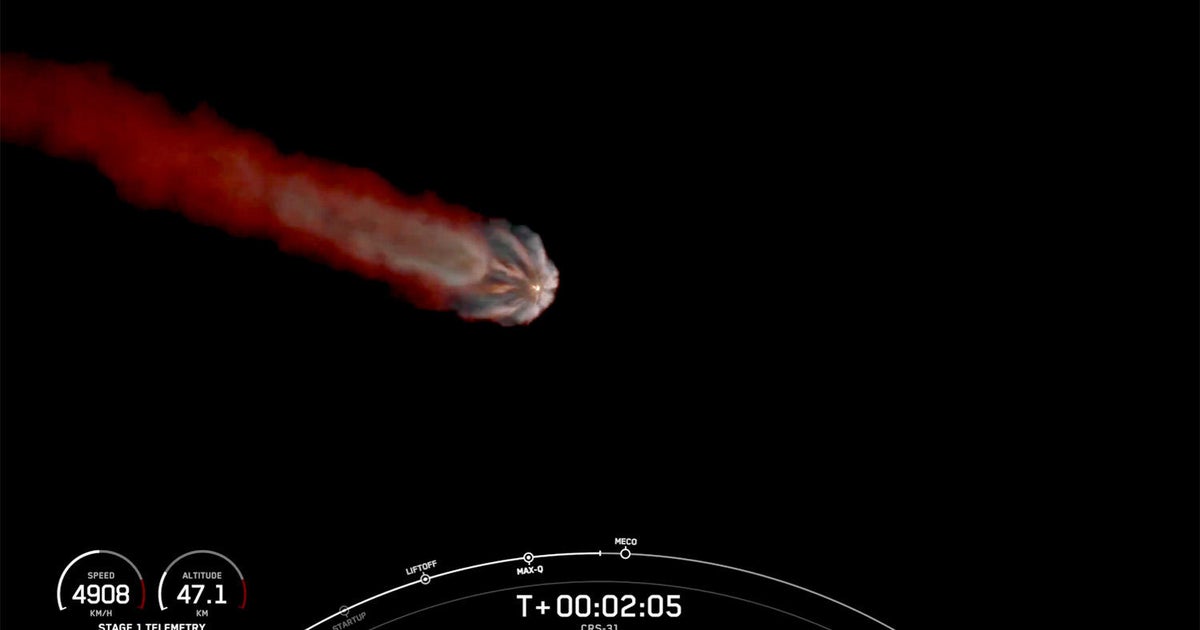CBS News
CDK cyberattack outage could lead to 100,000 fewer cars sold in June, experts say

The CDK Global cyberattack is expected to cut auto dealerships’ vehicle sales in June down by about 100,000, or more than 7%, compared with the same period in 2023.
The projected decrease is not reflective of weak demand, but rather the anticipated consequence of some dealerships’ reliance on CDK sales software for transactions. Many dealers have been without full access to their systems for more than a week, with no promise from CDK that they’ll be back up and running by the end of the month.
“An auto dealership is basically run by its dealer management system, or DMS — it’s the financial backbone of these dealerships,” Tyson Jominy, vice president of data & analytics at J.D. Power, told CBS MoneyWatch. “It connects all the pieces of a dealership together, including new and used vehicle sales and the financing. It’s a very important operations system.”
The outage, which CDK has said was caused by a “ransom event,” came at an inopportune time for car buyers and sellers.
“June is one of the most important selling months for the auto industry, and we were expecting sales to be fairly strong,” Jominy said. “It’s part of the summer selling season, when families get out of school and want a new car to take a road trip.”
Fewer cars to be sold in June
J.D. Power estimates that total new vehicle sales for June will reach 1,273,600 on the low end, reflecting a 7.2% decrease from June 2023. That includes car sales to regular consumers, as well as fleet sales to businesses or rental car companies.
On an annualized basis, that would reflect a selling rate of about 15 million units for the full year, when the industry should be at 16 million, according to Jominy.
The average transaction price for new vehicles is $45,000, meaning the hit to dealerships could be substantial in dollar terms. Some car sales lost in June could occur in July, if CDK systems are restored by then.
“Because of the disruption to dealer software systems, June sales will not be reflective of actual consumer demand for new vehicles,” Thomas King, president of the data and analytics division at J.D. Power, said in a statement. “Instead, a significant number of sales that would have occurred in June are now likely to occur in July.”
He added that there is still considerable variability to what the official sales tally will be for the month, given the ongoing uncertainty around when CDK systems will be fully restored.
“Sales will be delayed, but the majority will likely occur in July shortly after the situation is rectified and sales are being made despite system outages,” King added.
Can I even buy a car now?
CDK powers business operations for 15,000, or more than half, of all the auto dealerships across the U.S. Dealerships that don’t rely on CDK’s DMS are able to conduct business as usual, and could even be experiencing an uptick in business, according to Jominy.
“If you really need car, you could still get one, but you’d need to find a dealer that uses one of CDK’s competitors’ products,” Jominy said.
Those dealers that are CDK customers have had to find workarounds to transact with customers, including recording sales manually with pen and paper.
“If you’re a consumer and you go to a dealership, the cars are still there and you could potentially maybe take one home, but dealerships are precluded from in some cases getting consumers approved for a loan, or being able to finalize transaction,” Jominy said. “A dealership without DMS system is a bit like playing hockey without skates. You can still play, but it’s going to be a lot slower and harder to do.”
CBS News
11/4: The Daily Report – CBS News

Watch CBS News
Be the first to know
Get browser notifications for breaking news, live events, and exclusive reporting.
CBS News
11/4: America Decides – CBS News

Watch CBS News
Be the first to know
Get browser notifications for breaking news, live events, and exclusive reporting.
CBS News
Cargo ship launched to space station with supplies, science gear and holiday treats for crew

SpaceX launched an unpiloted Dragon cargo ship Monday evening, an election eve flight to deliver three tons of crew supplies, science gear and other equipment to the International Space Station, including an unusual wooden satellite, a solar wind monitor and holiday fare for the lab’s crew.
The Dragon’s Falcon 9 rocket blasted off from historic launch pad 39A at the Kennedy Space Center at 9:29 p.m. EST, lighting up the night sky for miles around as it climbed away atop 1.7 million pounds of thrust.
NASA/SpaceX
After boosting the rocket out of the dense lower atmosphere, the first stage, making its fifth flight, peeled away, reversed course and headed back to an on-target landing at the Cape Canaveral Space Force Station while the second stage continued the climb to space.
The landing marked SpaceX’s 57th successful booster recovery at the Florida Space Force station and its 363rd overall, including California flights and droneship landings.
Spaceflight Now
Just under 10 minutes after liftoff, the vacuum-optimized engine powering the Falcon 9’s second stage shut down and one minute later, the Dragon was released to fly on its own. If all goes well, it will catch up with the space station Tuesday morning and move in for docking at the lab’s forward port at 10:15 a.m.
One of the first items on the agenda is a test Friday to determine the Cargo Dragon’s ability to boost the space station’s orbit slightly using its aft-facing thrusters. The ISS is routinely re-boosted by Russian Progress freighters and Northrop Grumman Cygnus cargo ships, but Friday’s test will be a first for SpaceX.
The California rocket builder is under contract to NASA to build a powerful space tug of sorts that can be used to safely drive the ISS back into the atmosphere when the lab complex is retired in the 2030 timeframe. The vehicle is needed to make sure the station breaks up over a stretch of ocean well away from populated areas and shipping lanes.
During the test Friday, the Cargo Dragon’s aft thrusters will fire for about 12 minutes.
“The data that we’re going to collect from this reboost and attitude control demonstration will be very helpful, informing SpaceX analyses on how the system performs,” said Jared Metter, SpaceX director of flight reliability. “This data is going to lead to future capabilities, namely the US de-orbit vehicle.”
Reboost aside, the Cargo Dragon is loaded with slightly more than 6,000 pounds of equipment and supplies, including 2,022 pounds of science gear, 2,119 pounds of crew clothing, food and other supplies, 377 pounds of spacewalk equipment, 525 pounds of space station hardware and 44 pounds of computer equipment.
One of the more unusual payloads: Lignosat, a small wooden satellite using a framework of magnolia panels built by researchers at Kyoto University in Japan and the Tokyo-based logging company Sumitomo.
STR/JIJI PRESS / AFP via Getty Images
“While some of you might think that wood in space seems a little counterintuitive, researchers hope that this investigation demonstrates that a wooden satellite can be more sustainable and less polluting for the environment than conventional satellites,” said Meghan Everett, the ISS deputy project scientist.
“The main objective here is to determine whether wood can be used in space, and to do this, researchers will measure the temperature and strain of the wooden structure and see how it might change in the vacuum environment of space with atomic oxygen and radiation conditions as well.”
As with all station-bound Dragon cargo ships, the crew supplies include fresh food and special treats for holiday meals.
Bill Spetch, ISS operations and integration manager, said the “food kit” includes “citrus, apples, sweet onions, blueberries, radishes, etc,” along with lobster, crab and quail for holiday meals. A variety of cheeses is on board as well as fresh coffee and personal items requested by each crew member.
Mounted in the Dragon’s unpressurized trunk section is the Coronal Diagnostic Experiment, or CODEX, an instrument that will be mounted outside the space station to learn more about how charged particles in the solar wind are heated to millions of degrees and accelerated to enormous velocities, affecting Earth’s space environment and the rest of the solar system.
Inside the station, the astronauts will have a variety of new experiments and instruments to operate and monitor, including one called ARTEMOSS that will examine how Antarctic moss tolerates the space radiation and microgravity environment to learn more about how plants might be used in future life support systems.
The European Space Agency is sending up a space exposure experiment to learn more about how high-tech materials respond to prolonged exposure to the weightless environment and another experiment to study how organic samples degrade when exposed to unfiltered ultraviolet light from the sun.
And in an experiment that could be particularly useful to future astronauts, a small device known as Nanolab Astrobeat, provided by the Malta College of Arts, Science and Technology, will test cold welding technology that could prove useful for repairing leaks or other damage from inside a spacecraft.
The Cargo Dragon is expected to remain docked at the space station for about a month before it returns to Earth with station components needing refurbishment, trash and other no-longer-needed items.





